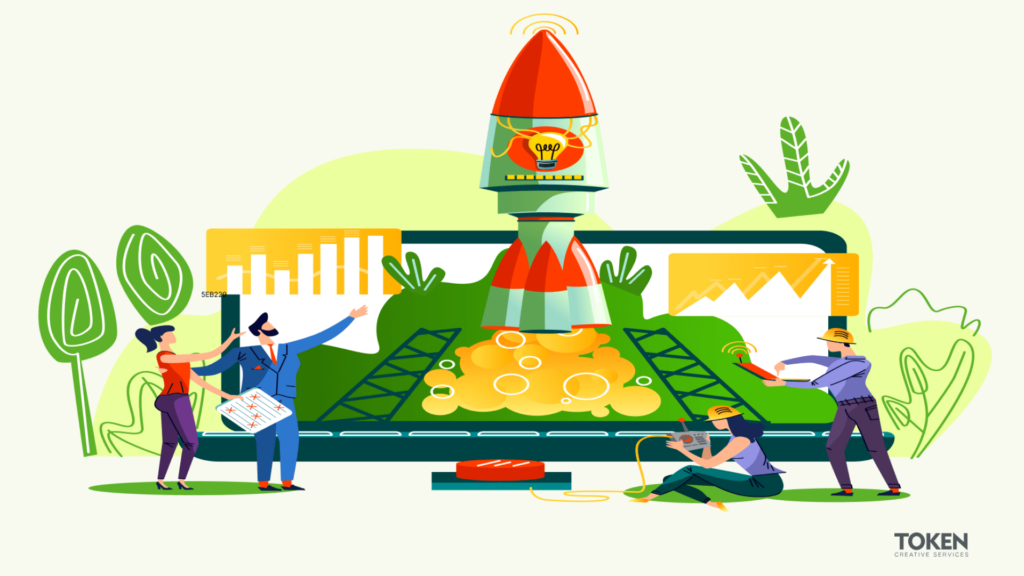What is User Interface (UI) and User Experience (UX) Design?
What is UI/UX design? This post will help you understand the difference between the two terms. It will also help you understand what makes a good user interface and what makes for a good user experience design. In short, we’ll break down these two concepts of interface and experience design so that you can create sites that are easy to use for your users.
1. What do These Even Mean?!
User Interface (UI) design is the design of the visual elements of a user’s interaction with a product. It is sometimes called user interface design, although commonly the term interface is used, whether or not the design is also concerned with usability.
UX design is the science of designing and building products and experiences for humans. It is something that goes way beyond the visual design of items and also includes the overall understanding and management of the entire human-computer interaction (HCI). User Experience Designers might be working on apps, websites, video games, interactive clocks or anything that humans interact with. Although UI and UX are often used interchangeably, there are many key differences that will help you get your point across in your work and differentiate yourself from those who are just putting label on things and calling themselves designers. Before we look at the key differences between UI and UX, let’s get one thing out of the way. Both are very important, but and this goes without saying, only some aspects of UX should be considered when working with a UI designer, while some aspects of UI should be considered by any UX designer. Other than that, they are two very different disciplines and should be treated as such.
UI is, simply put, a visual interface. While User Experience is concerned with the human user interactions and design of an app, website, game, etc, there are plenty of extra aspects that should be considered in order to be a good UX designer. Some of these extra things include user triggered features, accessibility concerns and other technologies. UX is a field of study of human-computer interfaces, interactive systems, and related technologies and practices. It is concerned with the interactions that humans have with products and websites, thus much of UX design is concerned with the overall system design in a given product or site, but there are a lot of design principles that go beyond just UI.
2. Tell Me More About User Experience (UX) Design
User experience design (UX design) is the process of enhancing user satisfaction by improving the usability, accessibility, and pleasure provided in the interaction between the user and the product. It’s not just about making something look pretty, it’s about making something work well.
User interface design (UI/UX design) UI/UX design is focused on enhancing user experience (UX) and they’re responsible for creating the look and feel for the entire site or experience. Monetizing that experience is where things start to differ. A good UI/UX will increase your visitors’ experience (conversion rate) and conversions, but it will not necessarily result in higher profits. In fact, some sites with higher conversion rates have worse UI/UX because those sites were designed in a way that attracted visitors who had no intention of converting.
3. What makes for a good experience?
A good user experience has three parts: it’s simple, it’s functional, and it’s pleasurable. If you can create an experience that’s simple, functional, and pleasurable, then you’re going to build the kind of product that people will use, value, and love. UI/UX design has different viewpoints on creating a product from different viewpoints, therefore each perspective will lead you down a different path. In our User Experience Design workshops, there are some general guidelines for speaking, keeping things organized, and research data. There will also be some methodology for creating a validated test, which will help the team vet the work of one person or team.
User Interface Design is a design process for creating user interfaces. It’s the process of structuring, designing, and creating user interfaces using the principles and techniques of human-computer interaction. There are more rules and definitions than UX, but that isn’t the point. We need to share the same values, but EQD helps us avoid these common UX mistakes.
A designer will create user interfaces for programs and systems that help humans interact with each other, like we use apps and websites. Other ideal uses for the design skills in this discipline include writing functional and attractive user interfaces, creating user interfaces that are appealing visually without compromising functionality, determining the purpose and functionality of user interfaces, creating interactive and engaging content, designing templates and mockups for company inspiration, creating and maintaining effective use of splash screens, and creating interactive flow diagrams.
Some designers make their living as UX designers. We go into design and development in a shared studio, or sometimes remotely, but a lot of our work is still done in a normal office setting.
Even though we utilize design techniques like slide presentations, Adobe flash, Bauers ArtStation, and other design tools to help us in our day-to-day work, we’re still UX designers. We use principles and techniques to communicate and think about design.
4. How can I improve my own UI/UX design?
There are lots of sites that offer great resources for improving your UI/UX design skills. Here are a few: uiarchive.com uidesigner.com uidesigner.io ui-patterns.com uipatterns.com uipatterns.net
In this post, I’ll cover what UI/UX design means, common pitfalls, tools for improving the UI/UX of your site, and some resources for improving your UI/UX design skills. I’ve written articles on designing user interfaces before. The following is a lightweight summary of those articles with some new additions that I think will be useful for a more comprehensive understanding of what UI/UX design is and its importance.
The proper way to think about user experience is that it is the sum of the effort that a user puts into figuring out how to use it. The user has to engage in a variety of mental and physical activities in order to figure things out: locate a desired piece of information, filter information, get a path through an interface, etc. The UI/UX of a site is just the set of actions that a user needs to invest cognitive effort into figuring out how to use it.
5. Conclusion: Keep things simple when designing your site or app
The most important thing is to keep things simple. Don’t overcomplicate things by trying to shoehorn in features that your customers won’t use or that don’t work well. Find a simple solution that works for your customers, and stick with it. The pie-in-the-sky ideal of user interface design should never become the reality for any company. Customers will eventually find a way to do what you dreamed of, and your users will find new ways to navigate your services. As with any design process, you have to consider cost and feasibility. Going with the latest design trends can cost you business. Keep in mind that your customers will keep looking for the best experience they can have. Most UX design companies work with designers who specialize in certain fields, such as user experience, merchandising, experience analysis, and user experience design.
UI/UX design focuses on what users will experience on a site. UI refers to your interface rules and UX refers to the user’s experience. UI/UX is the study of user interface design principles, processes, and methods. User experience is the gold standard for UX, but both terms are sometimes used interchangeably. An example of this would be using UI/UX in one sentence to say your company focuses on user experience. Because UI/UX is a broader concept than user experience, these two terms often don’t belong together. There are, however, some aspects of user experience that are within the domain of UI/UX. User experience includes observing, influencing, and being influenced, as well as being aware and knowing. All of these things are part of user interface design. This also applies to what the user experiences while using your products or services.
The UI/UX foundation is design thinking. Design thinking is the process of thinking about and creating user interfaces using methodologies based on the principles of usability. The steps of this process can usually be summarized this way:
UI/UX is an umbrella term. Check out our UI/UX page for more information on how to get Token working for your UI!
Related Articles
SEO Boosters: 8 User Experience Signals for Higher Rankings!
Conversion Rate Optimization Using SEO | A Complete Guide
Let Us help you!
Have a question for our team? Want to learn more about what we offer? Already know what your company needs and just want to have a conversation with us?
Follow us for more helpful content.
Let Us help you!
Have a question for our team? Want to learn more about what we offer? Already know what your company needs and just want to have a conversation with us?

